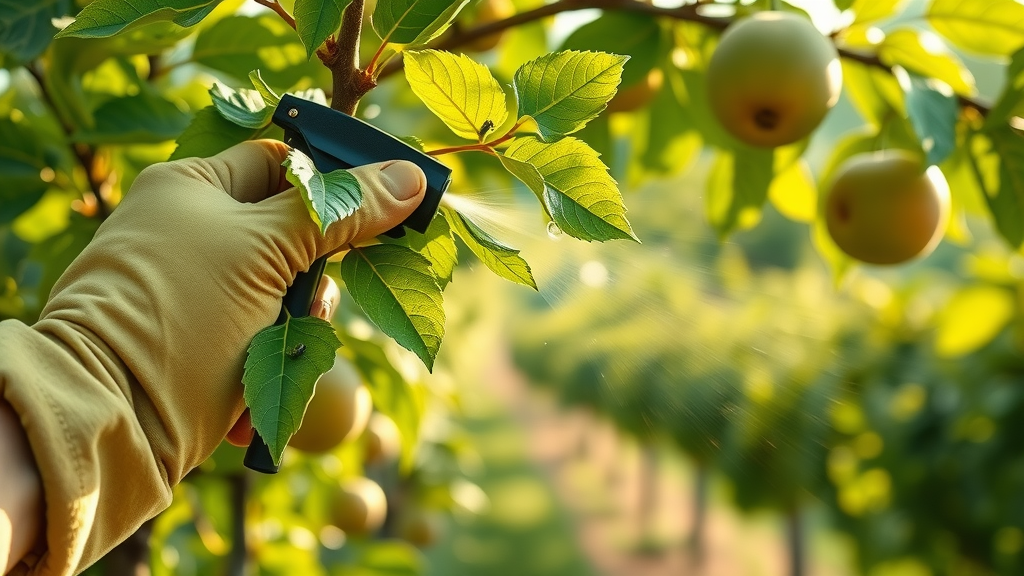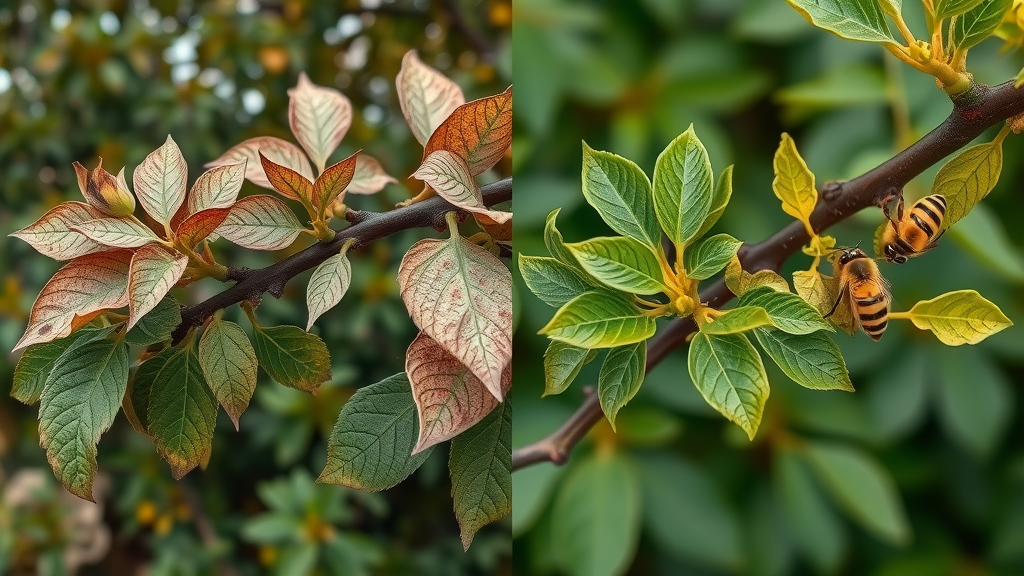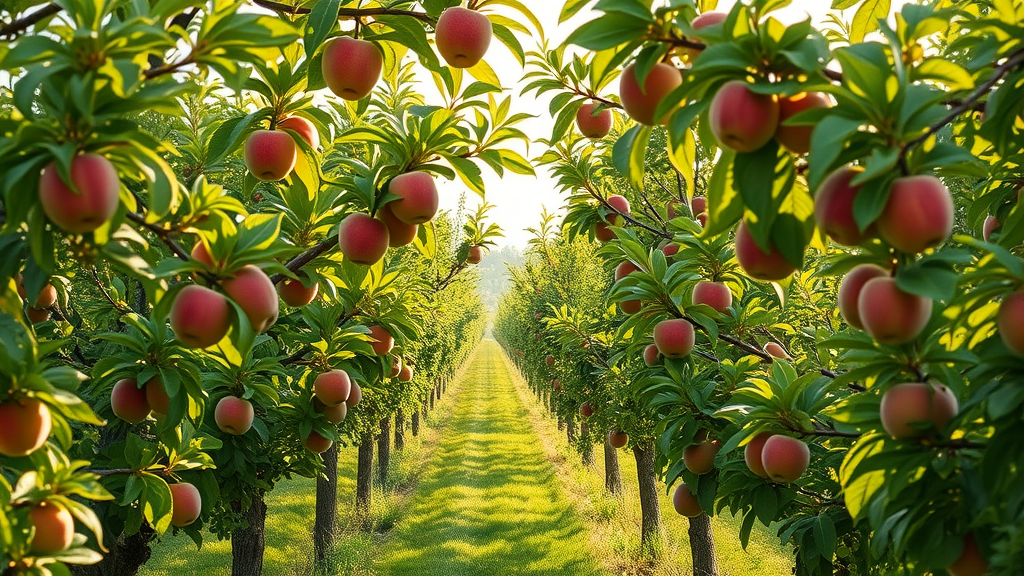Did you know that more than 5 million liters of pesticides are used each year on trees and plants worldwide? This eye-opening fact challenges us to rethink how we nurture our landscapes. Environmentally safe tree spraying isn’t just a buzzword—it’s a movement to protect your fruit trees, ornamental trees, and, most importantly, the ecosystems that depend on them. If you care about healthy trees and a thriving garden, choosing eco-friendly tree care methods could be the single biggest step you make to preserve nature, safeguard bees, and enjoy a bountiful harvest without risk to your family or wildlife.
In this comprehensive guide, you’ll discover the science and best practices behind environment-friendly tree sprays, practical pest control strategies that don’t harm beneficial insects, and hands-on tips to keep your tree spraying safe for the environment—today, and for generations to come.
Did You Know? 5 Million Liters of Pesticides Are Used Annually—Here’s Why Environmentally Safe Tree Spraying Is Crucial
The sheer volume of pesticides used on trees and gardens each year is staggering, especially when considering the effects on plants, animals, and humans. Traditional tree spraying methods, though often effective against tree pests and diseases, contribute significantly to environmental pollution. Chemicals seep into soil and waterways, disrupt the balance for pollinators like bees, and threaten the health of birds, fish, beneficial insects, and even local communities.
That’s why environmentally safe tree spraying has become so crucial for modern tree care . By switching to eco-friendly tree insecticides and alternative pest control methods, tree owners play a direct role in reducing hazardous chemical runoff, protecting beneficial insects, and providing safe habitats for fruit trees and other plants. You’ll not only avoid damage from unwanted pests, but also enjoy healthier, more robust trees that contribute to a balanced, resilient ecosystem.
Embracing this approach also allows you to support natural pest control systems, avoid unnecessary exposure to chemicals in your food and yard, and serve as a community role model for sustainability. Now, let’s visualize this shift with a look at an orchard thriving through responsible practices:

Understand the science behind environmentally safe tree spraying
Learn the risks of conventional tree sprays for fruit trees and shrubs
Discover alternative tree spray and tree insecticides for healthier tree care
Get practical advice on pest control while protecting beneficial insects
Identify eco-friendly tree spraying practices that protect tree health and the environment
Comparison of Common Tree Spraying Methods | |||
Method |
Effectiveness |
Impact on Beneficial Insects |
Environmental Safety |
|---|---|---|---|
Conventional Tree Spray |
High |
High negative impact |
Low |
Neem Oil |
Moderate |
Low impact |
High |
Organic Tree Insecticides |
Moderate |
Moderate impact |
High |
Homemade Sprays |
Varies |
Low to moderate impact |
High |
"Adopting environmentally safe tree spraying practices doesn’t just protect your garden—it safeguards the entire ecosystem." — Dr. Elaine Rivers, Environmental Scientist
The Importance of Environmentally Safe Tree Spraying for Fruit Trees and Fruit Tree Health
Every fruit tree enthusiast knows the joy of a healthy harvest, but few realize that the future of their garden depends equally on what they spray as on how they prune or water. Environmentally safe tree spraying is an essential, science-based practice that guards against devastating pests and diseases—without jeopardizing pollinators, beneficial insects, and the naturally occurring helpers that keep orchards alive and productive.
The move away from systemic chemical tree insecticides is not just a trend. Research shows that sustainable, natural strategies are effective at warding off everything from aphids to the notorious Japanese beetle , all while preserving the delicate ecosystem that supports healthy trees and pest control . Whether you’re nurturing a backyard apple tree or managing a diverse woodland, you’ll see the impact in the form of vigorous leaf growth, fewer visible tree pests , and far less risk of contamination for your soil and water.
The health of your fruit trees is deeply entwined with the well-being of your family and your environment. Making an informed shift to eco-friendly tree sprays means you’re actively removing one of the leading causes of pollinator decline and building a legacy of sustainability. Seeing a bee pollinate your blossom or a bird nest in your orchard isn’t just rewarding—it’s proof that responsible tree care works in harmony with nature.

Understanding the Impact of Tree Spraying on Tree Pests, Tree Pest Control, and the Broader Environment
When you spray your garden or ornamental trees , you’re not just targeting unwanted pests; you’re influencing an entire micro-ecosystem. Many conventional tree sprays eliminate both harmful and beneficial insects, meaning natural predators cease to exist, and tree pests such as aphids, spider mites, or scale insects can rebound more forcefully. This creates a chemical dependency cycle: the more you spray, the more vulnerable your trees and plant communities become to recurring outbreaks and invasive species.
Eco-friendly alternatives, on the other hand, are formulated to have selective action against common pests that threaten fruit trees , without reducing the population of pollinators or guardian insects that naturally provide pest control for trees . This symbiotic approach also reduces instances of fungal diseases and other tree health problems that proliferate when natural checks and balances are disrupted.
By engaging in environmentally safe tree spraying , you become part of broader efforts to mitigate environmental damage, reduce invasive species like emerald ash borer or Japanese beetles , and ensure resilient, healthy tree growth well into the future.
Risks of Conventional Tree Insecticides: How They Affect Tree Care and Beneficial Insects
Traditional tree insecticides often boast rapid pest elimination and visible results. However, their impact is indiscriminate. Many synthetic products wreak havoc on populations of beneficial insects , such as ladybugs, lacewings, and honey bees—nature’s own pest controllers. As their numbers dwindle, you may notice a spike in unwanted pests, increased susceptibility to pests and diseases , and long-term detriment to your soil health, garden birds, and even pet safety.
What’s more, chemicals from these sprays frequently leach into groundwater or blow onto neighboring plants and trees, with cumulative effects on the landscape and wider environment. Children playing, pets exploring, and edible fruits ripening on your trees can all be affected by residues from hard pesticides. By contrast, environmentally safe tree spraying replaces this risk with long-term gains for biodiversity, pollination, and cleaner, safer harvests.
Consider the visible difference: a tree branch battered by harsh chemical applications will often show curled, discolored leaves and a worrying lack of life, compared to a vibrant, organically managed branch alive with bees and fresh growth:

Eco-Friendly Alternatives: Neem Oil, Organic Tree Sprays, and Natural Tree Pest Control Solutions
Today’s most effective environmentally safe tree spraying methods include natural products that harness the power of plant-based oils, targeted microbial agents, and homemade blends that disrupt the cycle of pests and diseases without harming your local ecosystem. Chief among these is neem oil , a centuries-old botanical solution now proven to control a variety of tough tree pests while supporting tree care in organic orchards and gardens around the world.
Other options such as horticultural oil, insecticidal soap, garlic-oil solutions, and biological controls (like beneficial nematodes) allow growers of all skill levels to customize their pest control for trees. By learning which methods work best for specific species—whether apple, peach, plum, or ornamental—you’ll maximize your ability to cultivate healthy, productive trees in harmony with nature.
Below, we explore some of the most popular and effective eco-friendly approaches to tree spraying for both home and professional use.
How Neem Oil Safeguards Fruit Trees and Supports Sustainable Tree Care
Neem oil —extracted from the seeds of the Azadirachta indica tree—is widely regarded as one of the safest and most effective natural solutions for pest control in fruit trees , ornamentals, and even vegetable gardens. When used correctly, neem oil acts by disrupting the feeding and reproduction cycles of soft-bodied insects like aphids, whiteflies, spider mites, and even the notorious Japanese beetle .
Unlike conventional tree insecticides, neem oil is highly selective, causing minimal harm to pollinators and most beneficial insects when applied during the correct window (such as early morning or late evening). It also carries anti-fungal properties, helping to prevent or suppress fungal diseases that blight leaves, stems, and fruit. For sustainable tree care , neem oil is a star player, helping to create an invisible shield around young shoots and blossoms while ensuring you’re not introducing synthetic residues into your food or soil.
Proper application, including correct dilution and even coverage, ensures neem oil remains effective as part of an environmentally safe tree spraying plan. It is also compatible with many DIY recipes and integrates well into organic certification schemes, making it an essential tool in your eco-friendly tree care toolkit.

Organic & Non-Toxic Tree Insecticides: What Works Best for Common Tree Pests and the Japanese Beetle
Eco-friendly does not mean ineffective. Modern organic tree sprays combine plant-based oils, minerals, and sometimes microbially-derived ingredients to manage outbreaks of common pests including aphids, scale insects, mites, leafhoppers, and the invasive Japanese beetle . Popular options include insecticidal soap, which quickly suffocates soft-bodied insects, and horticultural oil, which coats pests and their eggs to prevent hatching.
For trees and shrubs targeted by Japanese beetles and other invasive species, organic sprays with pyrethrin (derived from chrysanthemums) or spinosad (a soil-borne bacterium) provide added punch—always read the label for application safety regarding pollinators. These solutions degrade quickly in the environment, minimizing residual buildup that plagues conventional approaches.
When faced with outbreaks, remember: combining several methods, such as manual removal, cultural tree care like pruning, and appropriately timed organic sprays , maximizes results and encourages healthier trees with robust natural defenses.
DIY Environmentally Safe Tree Spray Recipes for Pest and Disease Control
Creating your own tree spray at home is simple, cost-effective, and allows you to fine-tune solutions for your unique garden needs. Common recipes include blends of neem oil, mild soap (such as castile soap), citrus peels, and garlic—all safe ingredients for people, pets, and pollinators when used properly. For instance, a basic neem oil spray might blend 1 teaspoon of high-quality neem oil with 1/2 teaspoon of gentle soap in a quart of water, misted on foliage in the early morning.
Other recipes rely on the antifungal and antibacterial properties of garlic or citrus oils to target pests and disease on susceptible fruit trees and shrubs. Not only do these preparations allow for safe, frequent reapplication as needed, but they also foster a routine of proactive scouting and gentle intervention—hallmarks of sustainable tree care .
Want to try? Here’s a bird’s eye view of typical ingredients and how easy it is to get started:

Implementing Environmentally Safe Tree Spraying: Step-by-Step Application, Timing, and Safety Tips
Now that you’re armed with environmentally safe solutions, it’s time to put best practices into action. Application timing and preparation are just as important as the products you use—they can drastically impact your results and the overall health of your fruit trees and landscape. The following steps ensure your efforts support both tree pest control and long-term sustainability:
Assess your tree’s needs and existing pests or diseases
Choose the right environmentally safe tree spray for your fruit trees
Prepare equipment and mix solutions carefully
Apply sprays at the safest times to avoid harming beneficial insects
Apply post-application care and monitor tree health
Assessment means scouting for common pests , checking for new damage, and identifying whether fungal diseases or insects are present. Once you know which threat you’re facing, select the matching eco-friendly treatment. Always read product instructions for dilution and safety—misapplication can reduce effectiveness even for natural solutions.
Equally important is the timing: apply sprays in the early morning or at dusk , when bees and other pollinators are least active, and never in peak heat or wind. Use clean sprayers for each product, and wash your hands and tools after application. Finally, take time to watch your trees over the coming week—look for signs of improvement, continued tree pest problems, or potential beneficial insect activity. This hands-on tree care helps you address issues before they escalate, fostering truly resilient and environmentally friendly trees.
Watch: How to Apply Environmentally Safe Tree Spraying for Maximum Fruit Tree Protection
Answering Your Top Questions on Environmentally Safe Tree Spraying
What is the most environmentally friendly pesticide?
The most environmentally friendly pesticides are those derived from natural sources and pose minimal risk to non-target organisms. Examples include neem oil, insecticidal soaps, and horticultural oils.
How to spray fruit trees organically?
Spraying fruit trees organically involves using natural ingredients such as neem oil, diluted soap, or commercial organic pesticides. Timing and coverage are crucial—apply in early morning or late evening to minimize harm to beneficial insects.
What can I spray my trees with?
For environmentally safe tree spraying, consider neem oil, horticultural oils, and organic tree insecticides. These options effectively manage tree pests and disease while being less harmful to the environment.
Is there a non-toxic insecticide?
Yes, options like neem oil and soapy water sprays qualify as non-toxic insecticides. These solutions control tree pests on fruit trees and protect beneficial insects.
Tutorial: DIY Environmentally Safe Tree Spray Recipes for Homeowners
Essential FAQs on Environmentally Safe Tree Spraying, Pest Control, and Sustainable Tree Care
Which tree pests are most effectively managed by organic sprays?
What are the prime times for tree spraying to maximize pest control and minimize impact on beneficial insects?
Are tree spraying methods different for fruit trees and ornamental trees?
Step-by-Step: Best Practices in Tree Care and Environmentally Safe Tree Spraying

Take the Next Step: Protect Nature with Environmentally Safe Tree Spraying Today
Start assessing your trees and choose eco-friendly spraying methods—your commitment today protects trees, supports pollinators, and preserves the beauty and balance of nature for generations to come. Take action with environmentally safe tree spraying and be the positive change your landscape needs!
 Add Row
Add Row  Add
Add 




Write A Comment